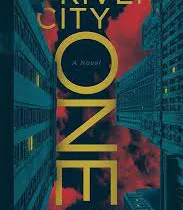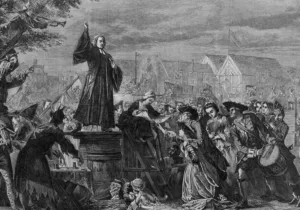“Liberalism has only one overriding aim: to secure the political conditions that are necessary for the exercise of personal freedom”, so the legendary Harvard political theorist Judith Shklar claimed in her 1989 essay “The Liberalism of Fear.”
Shklar’s mature political thought, a conservative liberalism that was content with the preservation of individual liberty rather than the pursuit of grand schemes of social change, came to embody the genre of Cold War liberal thought that pervaded throughout the twentieth century. To use Isaiah Berlin’s language, it was a “negative liberalism,” more focussed on avoiding humanity’s worse excess than the pursuit of positive ideals. This claim has most recently been made by Samuel Moyn in his ground-breaking new genealogy of Cold War liberalism, Liberalism Against Itself (Yale, 2023). According to Moyn, “the Cold War liberals abandoned the Enlightenment, stigmatized romanticism, and dug the grave of reason in history, purging perfectionism and progressivism from liberalism’s past.”
Much ink has already been spilled pondering Moyn’s brilliant latest book; his work has achieved critical acclaim for a reason. His iconoclastic approach highlights how many of the most influential mid-20th-Century intellectuals such as Isaiah Berlin, Karl Popper, Gertrude Himmelfarb, Hannah Arendt and Lionel Trilling reinvented liberalism, purging it of its progressive and emancipatory spirit. Rather than prophets of the triumph of the West and the collapse of dictatorship in the East, Moyn challenges us to view their contributions to Western political culture with a more critical eye. It was this brand of Cold War liberalism, Moyn argues, that created the intellectual potential for the more noxious creeds of neoliberalism and neoconservativism to emerge in the latter decades of the twentieth century.
Moyn is correct to point out that “the Cold War’s transformation of liberalism wouldn’t matter so profoundly now if liberals had seized the opportunity to rethink their creed in 1989. The haze of their geopolitical triumph made it easy to disregard their own mistakes, in spite of the long-term consequences in our time.” Moyn is also convincing when he argues that liberalism in Western democracies post-Cold War should have taken a different path. But did Anglo-American post-war liberalism only take this pessimistic and individualistic form? And were there figures within the mid-century liberal tradition who pre-empted the failures of this unambitious brand of liberalism in their own time? Nuancing Moyn’s point, I contend that the alternative liberal paths not taken were already embedded in the intellectual constellation of the mid-century world through Reinhold Niebuhr and Herbert Butterfield. An examination of these alternative mid-century liberals, thinkers who were not enthralled with the “liberalism of fear” but who nevertheless were influential on postwar politics, challenges the preeminence of Moyn’s minimalistic liberalism anti-canon.
Butterfield and Niebuhr offer a communitarian and progressive vision of politics distinct from the pessimistic and individualistic liberalism of fear. The specifically anti-individualist dimensions of Niebuhr and Butterfield’s social thought has often been overlooked. Conventional interpretations of both men have placed their thought within the Cold War liberal camp. While the term “Christian realism” was used only sparingly by Niebuhr and Butterfield, it is a useful concept invoked by interpreters fully aware of a continuous tradition centered around the relationship between neo-orthodox Protestant theology and skeptical liberal political philosophy, which coalesced in the early Cold War.
Moyn himself, perhaps echoing Shklar’s own critique of Butterfield in her 1957 book After Utopia, places Butterfield alongside Gertrude Himmelfarb as a pessimistic product of his age. Moyn’s Butterfield “asserted Christian providence against progressivism.” His “emphasis on the significance of human sin for politics stands out… as one of the central themes of Cold War liberal religiosity across the board.” This “religiosity” he also attributes to the “surge of importance of Reinhold Niebuhr, who took a well-known path from the Social Gospel and pacifism before World War II to Augustinian sage for Cold War liberals everywhere.”
How pessimistic however, was the political thought of Niebuhr and Butterfield? And does their “Christian Realism” deserve to be canonized alongside the liberalism of fear of a Berlin or a Shklar? Moyn cites Butterfield’s 1947 book Christianity and History as evidence of his Cold War liberalism. Moyn argues that it was particularly his revival of Lord Acton as well as his emphasis on sin and the corrupting nature of political power that warranted this charge. However, a more holistic reading of Christianity and History (the book which Butterfield always regarded as his most successful) counterbalances this somewhat negative commitment to the idea of sin and fallibility.
Christianity and History is far from a tract that challenges hope and progress in history. Beginning its life as a series of lectures delivered at Cambridge University’s divinity school, it was Butterfield’s first major attempt at linking his religious commitments to his practice as an historian. There is even strong argument to be made that Butterfield’s idea of providence enhances, rather than undermines, a progressive and redemptive vision of history. While Butterfield is critical of a certain vision of progress – the idea of its “inevitability” – he does not reject the pursuit of social and ethical progress altogether. He warned against catastrophizing and criticized the Cold War prophets of doom, going as far to claim that:
“it would appear that only in a world where suffering is possible and vicarious suffering attainable, can human beings measure the heights and depths of love and reach the finer music of life. Because there is tragedy in history love itself is brought to burn with an intense flame in human experience.”
This is far from the minimalist liberalism of Cold War liberalism.
From early on in Christianity and History Butterfield makes his inspirations (his utopia, if you like) clear. It is the ancient Hebrew prophets and Israel’s commonwealth. For Butterfield, “what was unique about the ancient Hebrews was their historiography, rather than their history.” Butterfield so admired the governing first principles of the Hebrews; principles through which they understood the world and their place therein. He also saw great similarities between the Hebrew world and his own. The capacity of the ancient Hebrews to triumph over tragedy by viewing history as cycles of events whereby human beings improved their social and political predicament impressed Butterfield immensely. The prophets taught the ancient Hebrews that this was by no means inevitable, but the product of a cultivated set of moral sensibilities. For Butterfield, “the period associated with the Jewish Exile, provides us with a remarkable example of the way in which the human spirit can ride disaster and wing victory out of the very extremity of defeat.”
Butterfield lamented the pessimism of his fellow liberals, something Moyn condemned a generation later. “When I consider the paltriness of the literature which the twentieth century produces about its own tragedy” he writes, “I must confess that I know of no language that seems to me strong enough to indicate the contrast.” Likewise, contrary to the myopic individualism of many of his contemporaries, Butterfield valued egalitarianism. Egalitarianism, he lamented, “itself was born out of Christian thinking.” This being said, his aforementioned invocations of providence were meant less in the sense of identifying God’s movements in history (Butterfield rubbished such claims) and more as a metaphor for the idea that history does have meaning, purpose, and direction. For Butterfield, “the Providence that lies in the very structure of history, however, ought to affect our conception of human action and of the role of human beings in the world.” This was the pursuit of a justice and equitable social order.
The striking similarity between the Christian realism of Butterfield and Niebuhr is their shared emphasis on the role of the Old Testament Prophets as sages for the post-Enlightenment age. While Butterfield drew a progressive vision of history from the Prophets, Niebuhr saw them as pioneers of social ethics. Much contemporary scholarship attributes Niebuhr’s writings on structural economic injustices to his youthful socialism, which he later abandoned, as well as his experiences early-on as a pastor in Detroit. The significance of these two factors is unquestionable, but what has often been overlooked is the tremendous importance of the prophets as a conceptual resource by which the mature Niebuhr outlined his social philosophy.
For Niebuhr, as for Butterfield, the Prophets of ancient Israel offered a disposition toward the world rather than a set of abstract doctrines. While identifying the realities of sin and evil in the world, they still maintained a divinely inspired idealism which made the pursuit of social progress and the alleviation of injustice a spiritual obligation. It was under this rubric that Niebuhr understood “progress.” Niebuhr was fascinated with what he described as the “Hebraic mode of apprehending reality” and went as far to claim in his 1955 book “Faith and History” that:
“the prophetic dramatic historical genius of prophetism was sufficiently vital in Judaism to produce two thinkers, Franz Rosenzweig and Martin Buber, in our own generation, who perceived the realities of both human and divine selfhood … more acutely than any Christian theologian.”
Based on these prophetic perspectives, Niebuhr too rejected the pessimism and atomism of many of his contemporary Cold War intellectuals. He argued in a 1957 Conference paper titled “Theology and Political Thought in the Western World,” that the proper “Christian attitude towards all systems and schemes of justice… consists of a critical attitude towards claims, expressed in the question whether they will contribute to justice in a concrete situation.” Niebuhr’s positive conception of prophetic justice went beyond the minimalist desire of simply providing individuals space to exercise personal freedom. It involved holding oppressive social and political institutions to account. One of his greatest allies in this endeavor was Martin Luther King Jr., who drew from Niebuhr’s thought both intellectually and spiritually. It was only another stroke that prevented Niebuhr from taking up King’s invitation to join him on the famous Selma to Montgomery March in 1965. Niebuhr was no stranger to calling out structural injustice or to the idea of collective emancipation.
Shklar was skeptical about the work of Niebuhr and Butterfield on the grounds that their vision of Christian social order was simply a reactionary revival of Christendom, the failed medieval European world that collapsed with the rise of modernity and the Enlightenment. However, this could not be further from true. Unlike other mid-century Christian social commentators, such as T.S. Eliot or Christopher Dawson, the Christian realist thought of Butterfield and Niebuhr did not emphasize theocracy. Indeed, they maintained that one did not even need to be a believer to assent to the wisdom of Biblical insights. Butterfield captured this insight famously in his 1953 work Christianity, Diplomacy and War, reassuring his readers that “even if the New Testament were a work of fiction and were presented to us as the achievement of an imaginative poet, its disturbing challenges and its exposure of the human plight would still be as valid as ever they were.”
Niebuhr too, in his Irony of American History, outlines that he need not elaborate upon the theological presuppositions upon which his work of political commentary rests. One did not need to be a Christian to accept the governing premises of their social thought. The Bible was used anthropologically rather than literally. What was original about Christian realism was its secularization of the theological insights of neo-orthodoxy theology. They did not, like some of their Christian counterparts, present the Cold War crisis as a battle between godless pagans and God-fearing Christians. And, if anything, they set out to challenge the pessimism of their times with a Biblically inspired hope. John C. Bennett, the lesser-known intellectual architect of “Christian realism” and colleague of Niebuhr and Butterfield at Christianity and Crisis, wrote as early as 1939 that “it is important to point out that the two theologians who are usually regarded as the fountainheads of Christian pessimism – Paul and Augustine – believed that men by the grace of God can become new creatures.” This was far from the Augustinian Christian pessimism Shklar paints.
Moyn is not afraid to admit that his present-day political commitments inform his recasting of the Cold War liberal tradition. The specter of Moyn’s critique of the contemporary neoliberal hegemony in Anglophone political culture is palpable. However, contrary to the more predictable polemics in the crisis of liberalism literature, Moyn moves beyond stale technocratic solutions or takedowns of liberalism’s enemies on the left or the right. The very idea of liberalism requires just as radical a reinvention in the post-Brexit/Trump era as it underwent in the 1940s and 50s.
What Moyn’s reflections do leave us with is a challenge: liberalism must innovate or die. Simply superimposing an early Cold War Christian realism onto a set of post-Cold War late capitalist conundrums may not necessarily be the solution. Yet, Christian realism offers a good starting point for the imaginative worldmaking process. The reflections of Niebuhr and Butterflied do indeed present a radical middle way between pessimism and utopia, a theologically-inspired skeptical liberalism that does not compromise a higher commitment to social progress and justice.
Many readers may ponder what the substantiative contributions of Butterfield and Niebuhr’s ideas were to the politics of their age. The answer is probably not as much as they would have wished. Cold War liberalism prevailed, precipitating a more disastrous neoliberalism by the end of the century. This was by no means inevitable, but a product of choices made, with certain conceptions of liberalism prevailing over others. But this question somewhat misses the point anyway. Liberalism can take many shapes and evolve over time. Modern, reform-minded liberals, rather than locked in Shklarian despair, ought to take up the battle of ideas in the public sphere and explore alternatives to the individualistic corruption of their creed. Our intellectual history certainly provides us with alternatives to the technocratic neoliberalism that has disillusioned so many.







 Sponsor a student for Christianity & National Security 2024
Sponsor a student for Christianity & National Security 2024